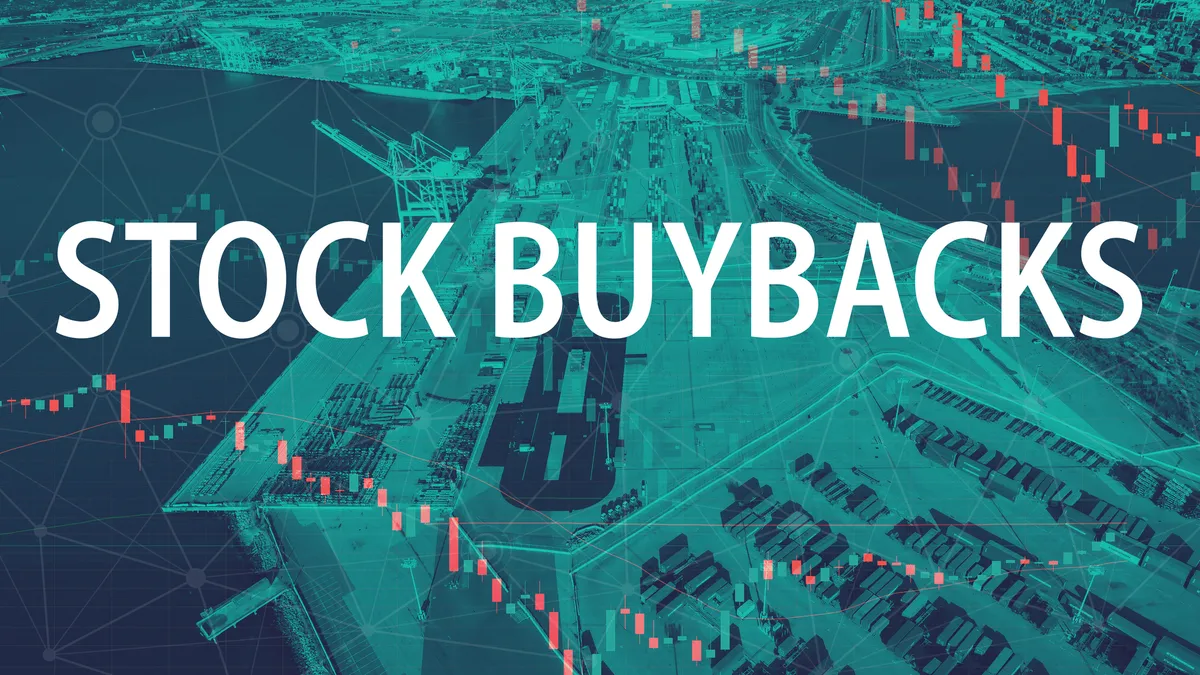When Amazon announced a $10 billion share repurchase plan earlier this month, it was just one of many major companies whose response to the Ukraine war and other causes of economic volatility is driving buybacks to a record.
"Amazon's management is looking to instill fresh confidence," AJ Bell Investment Director Russ Mould said in a Reuters report.
In addition to the buyback, which will go before a board vote in late May, the company also announced a 20-to-1 stock split, which will help make their stocks more attractive to fence-sitters who are put off by high per-share prices.
Record repurchases
Share buybacks are on pace to surpass last year, itself a big year for them. In just the first two months of 2022, companies announced plans to buy back almost $240 billion worth of stock, putting it on track to beat the fourth quarter of 2021, itself a record.
The Ukraine war along with the prospect of the Federal Reserve raising interest rates and commodity prices, already high, going higher is creating the kind of volatility that has led to a 12% drop in the S&P 500 since the beginning of the year. By buying up their own stock, companies make their shares more attractive to existing investors and signal that management has confidence in the company’s position despite the uncertainty.
“It does add a layer of overall support during periods of volatility,” Anthony Saglimbene, global market strategist at Ameriprise Financial, told The Wall Street Journal.
PepsiCo, Inc., Union Pacific Corp. and industrial-gas giant Linde PLC are among big companies announcing buybacks since the first of the year. Best Buy and Colgate-Palmolive are two others.
Goldman Sachs thinks buybacks could total $1 trillion this year, 12% higher than last year.
“The breadth of buyback activity is near a historic high, with the number of active programs double the typical figure,” the Journal reported.
Many top companies, with plenty of cash stockpiled, are well-positioned to buy back their stock.
“Companies in the S&P 500 have roughly the same amount of cash now that they ended 2020 with,” Investors Business Daily reported. By some estimate, that amounts to $2.7 trillion.
That’s enough cash to give “$8,131 to every man, woman and child in the U.S.,” the report calculated.
Investment preferred
Lawmakers in Congress and policymakers in the Biden administration have been trying to dampen companies’ enthusiasm for buybacks, saying the money would be better spent on productive investment. The Securities and Exchange Commission (SEC) at the end of last year proposed a rule requiring companies to explain the rationale behind their buyback plans, in part to ensure investors have a chance to decide if the move makes strategic sense.
“I think we can lessen the information asymmetries between issuers and investors through enhanced timeliness and granularity of disclosures that today’s proposal would provide," SEC Chairman Gary Gensler said at the time.
Lawmakers in both the House and the Senate have introduced bills to impose a tax on buybacks as part of an effort to curb them, although the chances of the legislation passing this year is declining along with the prospects of the Biden administration’s major initiatives, like the Build Back Better infrastructure package.
Executives say efforts to curb buybacks make little sense, given the difficulty of expanding productivity when supply chain constraints and historically tight labor conditions make big expansions difficult. In short, even if they wanted to spend the money instead of buying their own stock, they can’t easily do it.
CFOs say they’re already investing as much as they can in talent, new facilities and other productivity measures. There simply isn’t the capacity to invest more, no matter how much lawmakers want them to.
“We’re investing as much as the company can absorb,” Dave Denton, CFO of home-goods store Lowes, has said. “There [are] only so many projects that we can take on.”












